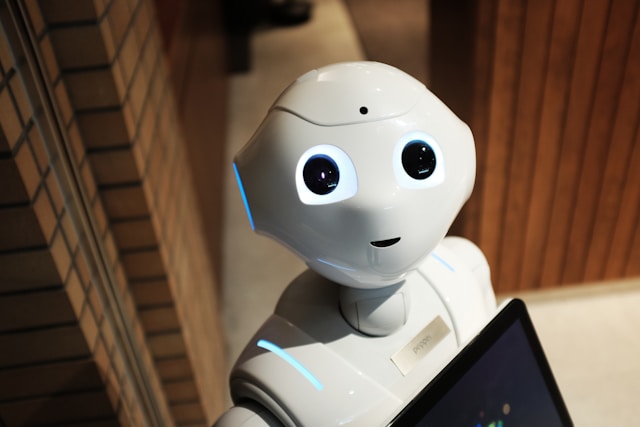

Question: Is it useful to connect an AI tutor for my child?
Answer: Yes, but only with the right approach. AI tutors can expand access to help, boost confidence, and give students practice opportunities they might not get elsewhere. At the same time, many parents have serious doubts. Let’s dig into both the worries and the benefits, so families can make an informed choice.

Parents’ hesitation is not just stubbornness. It comes from real experiences and concerns that deserve respect.
A common argument is that children should go first to teachers or classmates for help. If that is not enough, a live tutor is the logical step. One parent compared it to hockey training: if your child wants to play professionally, you do not hand them a quick app, you send them to the rink with a coach. The worry is that AI replaces the human connection, feedback, and accountability that children need to truly progress.
Another big fear is that AI kills the habit of thinking. A child asks a question, copies the polished answer, and calls it a day. On paper the homework looks perfect. But in reality, the brain barely moved. Parents see this as training kids to avoid effort, and many are rightly worried.
Plenty of parents share stories of AI making things up. One parent said that while preparing a work presentation, AI gave them complete fiction about product versions. If it fails adults, how can children tell when the answer is wrong? And if the explanation does not match the curriculum, kids could get even more confused.
For many parents, the value of homework is not the final answer but the process of grappling with difficulty. They want their kids to learn priorities, patience, and persistence. AI feels like a shortcut that removes the very muscle school is supposed to build: resilience.
In STEM, AI may help with formulas and step-by-step logic. But in literature, history, or philosophy, parents worry that it becomes unreliable. It may misrepresent sources or oversimplify complex debates. For families, that creates a big red flag.
Despite all this, AI tutors do have a meaningful role when families set the rules.
Not every parent can afford tutoring. Teachers cannot always stay after class. Some children are too shy to join study groups. In those moments, AI becomes the extra voice that fills the gap. For families in rural or low-resource settings, this is not a luxury, it is a necessity.
Kids often hesitate to ask “dumb” questions in front of classmates. With AI, they can test ideas without fear of embarrassment. That safe space to experiment encourages confidence, and confidence is half of learning.
Waiting until the next day to ask a teacher slows progress. AI tutors provide instant explanations, examples, or quiz questions. Used carefully, this can turn a half-hour of homework into an active loop of trial, error, and correction. Parents can jump in to ask: “Okay, now explain that in your own words.” That one question transforms the AI from an answer-machine into a thought partner.
In April 2025, the White House announced the Advancing Artificial Intelligence Education for American Youth initiative, making AI literacy a national priority. That move underlines a truth: in a few years, every workplace will use AI tools. Teaching children to engage critically with AI now is no different from teaching internet safety two decades ago.

Parents do not have to choose between “ban AI” and “trust AI blindly.” There is a middle path.
Even five minutes of parental presence changes how AI is used. Ask: “Does this answer make sense?” or “Can you explain it without looking?” That little nudge encourages critical processing.
Children can be trained to ask smarter questions. Instead of “Give me the answer,” try:
“Point out the weak spots in my essay.”
“Explain this formula and give me a new example to solve.”
“Ask me five practice questions about this topic.”
These prompts make AI act like a tutor that stretches thinking rather than a vending machine that spits out answers.
Have your child check class notes first, then ask AI for clarification, then verify in a textbook. AI should be one tool in a set, not the only one. This routine builds habits of cross-checking and critical thinking.
Parents do not dislike AI tutors because they are useless. They fear them because they are too good at producing perfect answers without building the skills behind them. But blocking AI will not prepare children for the future. Teaching them how to question, reflect, and verify will.
AI tutors are not here to replace teachers, peers, or real struggle. They are here to amplify learning when guided wisely. The real challenge for families is not deciding whether their kids will use AI – they already are – but making sure they learn to use it as a partner, not a shortcut.
Frequently Asked
We prodive VR biology, VR physics, and VR chemistry simulations. Please, check our catalog.
Please, fill the form to get demo labs for free.
Please contact our customer support service at support@xreadylab.com or book a call with the team to find out the conditions and book the VR class set up at your school.
Subscription to XReady Lab interactive VR labs. If you are a school, then you are also given access to the VR classroom system. VR class system helps you easily launch VR lessons for a large number of students, follow the experience of each student, as well as customise the content without developers.
We adhere to the world’s generally accepted recommendations and research. Our products are suitable for children from 12 years old.